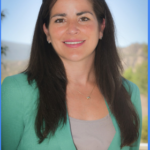Widgetized Section
Go to Admin » Appearance » Widgets » and move Gabfire Widget: Social into that MastheadOverlay zone
Neighborhood Navigator warns of looming COVID-19 crisis in Eagle County Latino community
While there’s been a lot coverage of resort workers being compelled to leave employee housing as a result of the COVID-19 outbreak, community leaders warn there’s a looming COVID-19 crisis in the most densely populated areas of Eagle County that is not getting as much attention.

“The Latino community, now that they are hearing about family members or friends being infected, are concerned,” said Melina Valsecia, director of Neighborhood Navigators of Eagle County. “Last week, I did not see many worries besides losing jobs, and there was a sense of overcoming this health crisis like any other crisis they had — ICE harassment, lack of health insurance, living day to day.
“Today, most people might know someone that might be infected and in self-quarantine. I think that the Latino community might be starting to feel like we are not immune to the pandemic. We might not have realized how big the problem is,” Valsecia added.
The Eagle River Village mobile home park in Edwards is home to more than 2,000 people, mostly Latino, living in just 381 trailers. It already has made the news for ongoing water-quality issues with its well-water system, and now it’s home to thousands of people in a very tight space.
With schools shut down since March 16 and at least until April 17, Valsecia said she’s grateful for the community rallying to provide meals but is concerned about education.
“The school district is delivering an average of 700 meals a day now, with new locations,” Valsecia said. “In some locations we are also distributing grocery bags and boxes prepared by The Community Market, Salvation Army and [Eagle County] School District nutrition services, thanks to donations from hotels and more.” See flyer at end of story for more details.
But she’s worried that kids, especially in the trailer park, are not getting the online educational support they need.
“With homeschooling, some families at Eagle River Village don’t have internet access,” said Valsecia, who also runs the MIRA (Mobile Intercultural Resource Alliance) Bus in conjunction with Vail Health. “A few families came to MIRA asking about wifi options and deals. I think children might be at their home and not even starting to receive the proper activities due to lack of equipment and/or internet access.”
Vail Mayor Dave Chapin said over the weekend, in an exclusive first phone interview with RealVail.com, that he is recovering well from his own infection from the COVID-19 virus and was fortunate to have the resources to be able to properly self-isolate and order meal deliveries. He knows others are not so lucky.
“This is a humanitarian mission now,” Chapin told RealVail.com when asked about the working-class residents of the Vail Valley struggling with no work, no school and trying to stay healthy in an outbreak that has hit Eagle County particularly hard.
To that end, Chapin is focused on economic recovery for the working class of Eagle County and taking care of the most vulnerable. He said he is donating to the Eagle Valley Community Foundation, which runs the Community Market food bank and has seen a 300% spike in demand, and he encouraged others to do the same.
“I think if people understood the humanitarian effect that this has had, when you see a family come pulling up [to the food bank] and it’s maybe the mom or dad or both and the two little kids and you know that that may be the only food they’re going to get that whole day, if that doesn’t a tug on your heartstrings, I don’t know what to tell you,” Chapin said.
As of Monday, Eagle County has 92 confirmed cases of COVID-19 in a population of just under 55,000 — although due to the lack of testing, health officials say the true number is unknown and infections likely number in the thousands.
That represented about 12.7% of the state’s overall 720 cases and ranked second only to Denver with 148 confirmed cases. Over the weekend, the first Eagle County resident, 64-year-old Rod Powell, died from the disease in a Denver ICU.
However, this is not just an older person’s disease, although it may hit them harder. Seventy percent of the cases in Colorado, as of Monday, are people under the age of 60.



